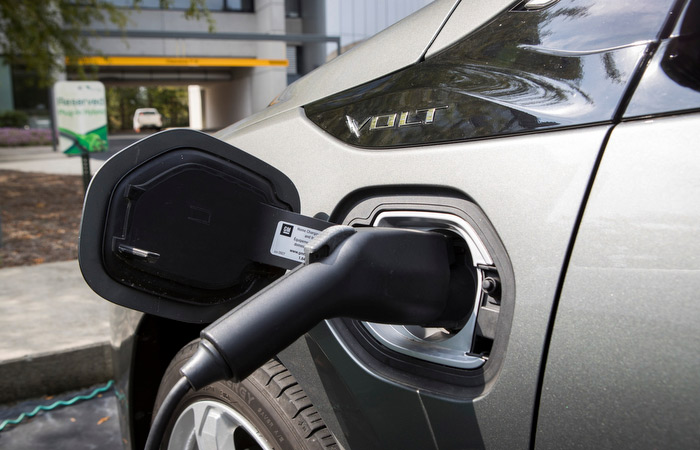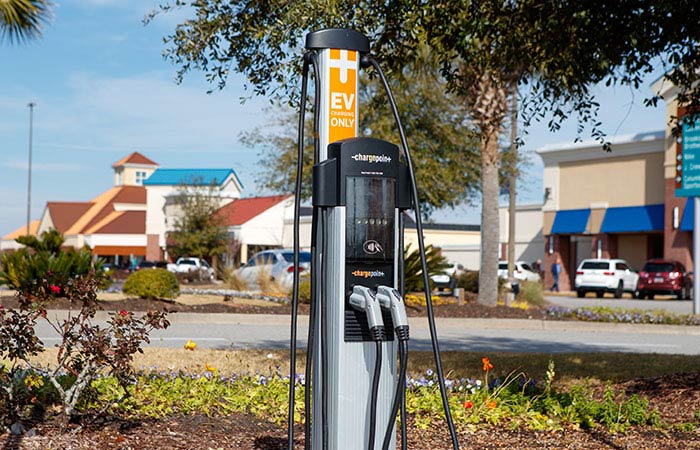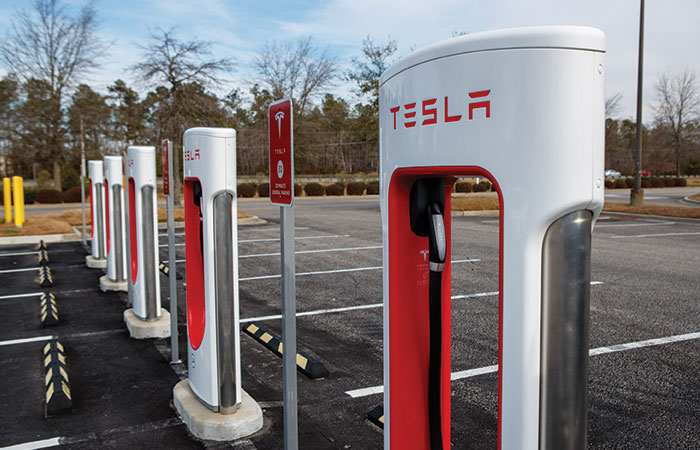Electric Vehicles 101
Electric vehicles (EVs) offer you a clean, quiet and enjoyable ride, and the coming years will offer more options than ever. With carmakers increasing the production of EVs and more charging stations being installed across the country, there has never been a better time to drive an EV. EVs have the added advantage of being better for the environment, especially those getting their charge from clean energy sources, which greatly reduces the amount of greenhouse gas emissions associated with driving.
If an EV is a good fit for your lifestyle and driving habits, you’ll find that there are other benefits compared to standard gas vehicles. Below is some information that may be helpful to you if you are considering purchasing an EV.
Selecting an Electric Vehicle
There are two types of electric vehicles on the market. The first type is the “battery electric vehicle” (BEV), which is powered solely by electricity. The second type is the “plug-in hybrid electric vehicle” (PHEV), which is initially powered by electricity and then switches over to gas once the electric battery power has been fully depleted. See below for more information about each type of vehicle.
| Description |
Battery Electric Vehicles, often referred to as BEVs, are vehicles that are powered solely by electricity that is collected through rechargeable battery packs. The range of new BEVs has been progressively increasing with most new vehicles having a range of over 200 miles. Additionally, many manufacturers are starting to make extended range batteries that can increase that range to 300+ miles on a single charge. |
| Fuel |
Vehicle batteries are charged using an electric vehicle charger. A 240-volt level 2 charger is recommended for BEVs because of their long range. Level 2 charging stations are a great option for overnight charging at your home, with most vehicles being able to be fully recharged overnight. Although uncommon in a residential setting, DC fast charging is often available in public settings and is a great option for road trips or other times when you need to replenish your battery quickly. |
| Environmental Benefit |
Battery Electric Vehicles do not have any emissions from the tailpipe, which helps to reduce carbon dioxide emissions. |
| Market Examples |
Ford F-150 Lightning, Chevrolet Bolt, Tesla Model S |
| Description |
Plug-in hybrid electric vehicles, which are also known as PHEVs, are powered by a battery for short trips and an internal combustion engine for long trips. PHEV batteries are smaller than BEV batteries and give less electric range. However, the range that they lack in battery is made up for with gas. PHEVs are initially powered by their battery but once the battery is depleted, the vehicle seamlessly switches over to an internal combustion engine that uses gasoline to power the vehicle. |
| Fuel |
Battery power is the primary power type for these vehicles. The battery can be charged at home through a 120-volt outlet (also known as a level 1 station) by a 240-volt level 2 charger. When their battery no longer has a charge left, the vehicle is then powered by the internal combustion engine, which is fueled using gasoline. This reduces the anxiety of running out of battery power on longer trips. |
| Environmental Benefit |
Although they still omit some tailpipe emissions, plug-in hybrid vehicles reduce both fuel consumption and overall emissions in comparison to a traditional internal combustion vehicle. As a result, they help reduce overall carbon dioxide emissions. |
| Market Examples |
Toyota Prius Prime, Jeep Wrangler 4XE, Volvo XC60 Recharge |
Electric Vehicle Charging

Level 1 Charger
Current: 120 volts (standard outlet)
Location: home, business
Ideal Vehicle: PHEV
Charge Time: 3 to 5 miles of range per hour

Level 2 Charger
Current: 240-volts (same as a typical dryer outlet)
Location: home, business
Ideal Vehicle: PHEV or BEV
Charge Time: 16 to 60 miles of range per hour

DC Fast Charger
Current: 480+ volts
Location: business
Ideal Vehicle: PHEV or BEV
Charge Time: 20 to 30 minutes give you approximately an 80% charge
Charger Comparison
| Charger Type | Advantages | Disadvantages |
| Level 1 Charger | Inexpensive, convenient way to charge a PHEV | Slowest charging method. Not typically recommended as a primary charging method for BEVs. |
| Level 2 Charger | Allows a vehicle to get a practical charge at a home or business. | More costly than level 1 chargers. Electrical upgrades or rewiring may be necessary for installation. |
| DC Fast Charger | Fastest charging method | Much more costly to install than other charging options. |
Need a charger?
Visit this site to search for chargers in your area.
Cost Savings
EV Savings Calculator
Use this EV Savings Calculator to see potential fuel savings from driving an electric vehicle.
| $0 | Monthly Gas Cost |
| $0 | Monthly Utility Cost |
| $0 | Monthly Savings |
This information is provided to help you estimate savings to make your own decisions. Actual savings may vary based on individual factors. This estimate uses the current average fuel efficiency of EVs in the US market (3.5 miles per kWh), and Santee Cooper’s average residential energy charges on the RG rate. Fuel efficiency may vary based on your particular EV.
Frequently Asked Questions
-
- Yes! We offer:
- EV rate plans for residential customers
- Evolve Grants for commercial customers
- Yes! We offer:
Federal incentives are available for the purchase of many EVs. To learn more about what federal incentives that you may qualify for, please click here.
Although EVs can be charged at any time, the best time to charge your EV is overnight. Santee Cooper offers two voluntary EV rates with different benefits. Both ChargeSmart EV Rate Plans are time-of-use plans, which means there are different prices for electricity depending on the time of day you use that electricity. In fact, you can save up to 70%, when compared to the standard residential RG rate, by charging your vehicle smartly during Super Off-Peak Hours (basically, overnight). We can help you choose the best one for you.
Horry, Georgetown and Berkley counties have electric vehicle chargers available to members of the public. To learn more about the locations of these chargers, click here.
There are a variety of chargers available within the marketplace, each with their own benefit. Many commercial customers select either a level 2 charger or a DC fast charger because of their quick charging time. To learn more about charging options, please see the EV charging section above or reach out to us directly using the contact info at the bottom of this page.
If you’re a Santee Cooper business customer, you may be eligible for an EVolve Grant. You can learn more about the grant program and application process here.
It is recommended that you install a charger in your home because that is often the most convenient charging location. That being said, installing the most basic charger, a level 1 charger, is as simple as plugging the charger provided at the purchase of the car into your standard wall outlet. For vehicle owners looking for more charging power for at home, they can install a level 2 charger. If you are unsure if your home is suitable for level 2 charging, it is recommended that you call your electrician. They should be able to come to your home and install a 240-volt outlet if needed. Santee Cooper offers rebates to residential customers who install level 2 chargers. Learn more here.
Questions?
Contact us by submitting your questions on the form below or calling us at 843-234-7147. Please allow 1-2 business days for a response.